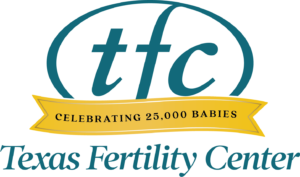
Adenomyosis is similar to endometriosis, but not as many people have heard of it
Many people have heard of endometriosis, but far fewer are familiar with adenomyosis. Similar to endometriosis, this condition occurs when the tissue that usually lines the uterus grows where it shouldn’t. Specifically, it grows into the muscular wall of the uterus, causing painful periods and other symptoms.
During a woman’s menstrual period, this tissue thickens and bleeds, but it has nowhere to go. As a result, the woman can experience an enlarged uterus and heavy, painful periods. Some researchers also believe that this condition may cause infertility, but there still isn’t definitive evidence.
Thankfully for women with this condition, Dr. Erika Munch can diagnose and treat this health issue at our San Antonio fertility center.
What are the causes and symptoms of this condition?
Researchers haven’t found the cause of this problem. However, they have discovered certain risk factors that can increase a woman’s chance of developing it.
- Having uterine surgery, including a C-section, fibroid removal or a D&C
- Giving birth
- Being in your 40s or 50s, although it can also appear in younger women
Because this condition is similar to endometriosis, it can sometimes produce no symptoms or only mild discomfort. However, adenomyosis can cause the following symptoms.
- Heavy or prolonged periods
- Painful periods, including severe cramping or sharp pelvic pain
- Ongoing pelvic pain
- Painful sexual intercourse
- Tenderness or pressure in the lower abdomen due to an enlarged uterus
If you have these symptoms, you don’t have to live with them. You can make an appointment at our San Antonio fertility center to get diagnosis and treatment.
How does TFC diagnose and treat adenomyosis?
When you visit our San Antonio fertility center, Dr. Munch will ask about your symptoms and medical history. She may perform a pelvic exam to determine whether you have an enlarged uterus.
Additionally, she may order testing, such as ultrasound imaging, magnetic resonance imaging (MRI) or an endometrial biopsy. Imaging can detect signs of this condition, and a biopsy can rule out other conditions.
For most women, this condition goes away after menopause. As a result, your treatment options will depend on your age and whether you want to have children.
- Anti-inflammatory drugs, including Advil and Motrin, can help control painful periods and reduce your menstrual flow when you take them one to two days before your period and during it.
- Estrogen-progestin birth control pills can reduce the pain and heavy menstrual bleeding. Progestin-only contraception, like an intrauterine device, can often provide relief by causing amenorrhea, or the lack of a period.
- Hysterectomy is the only way to cure this condition. However, doctors only recommend this option if other treatments haven’t worked and you don’t want to have child
You don’t have to live with the pain and discomfort of adenomyosis. Contact our San Antonio fertility center to schedule an appointment and learn about your treatment options.



